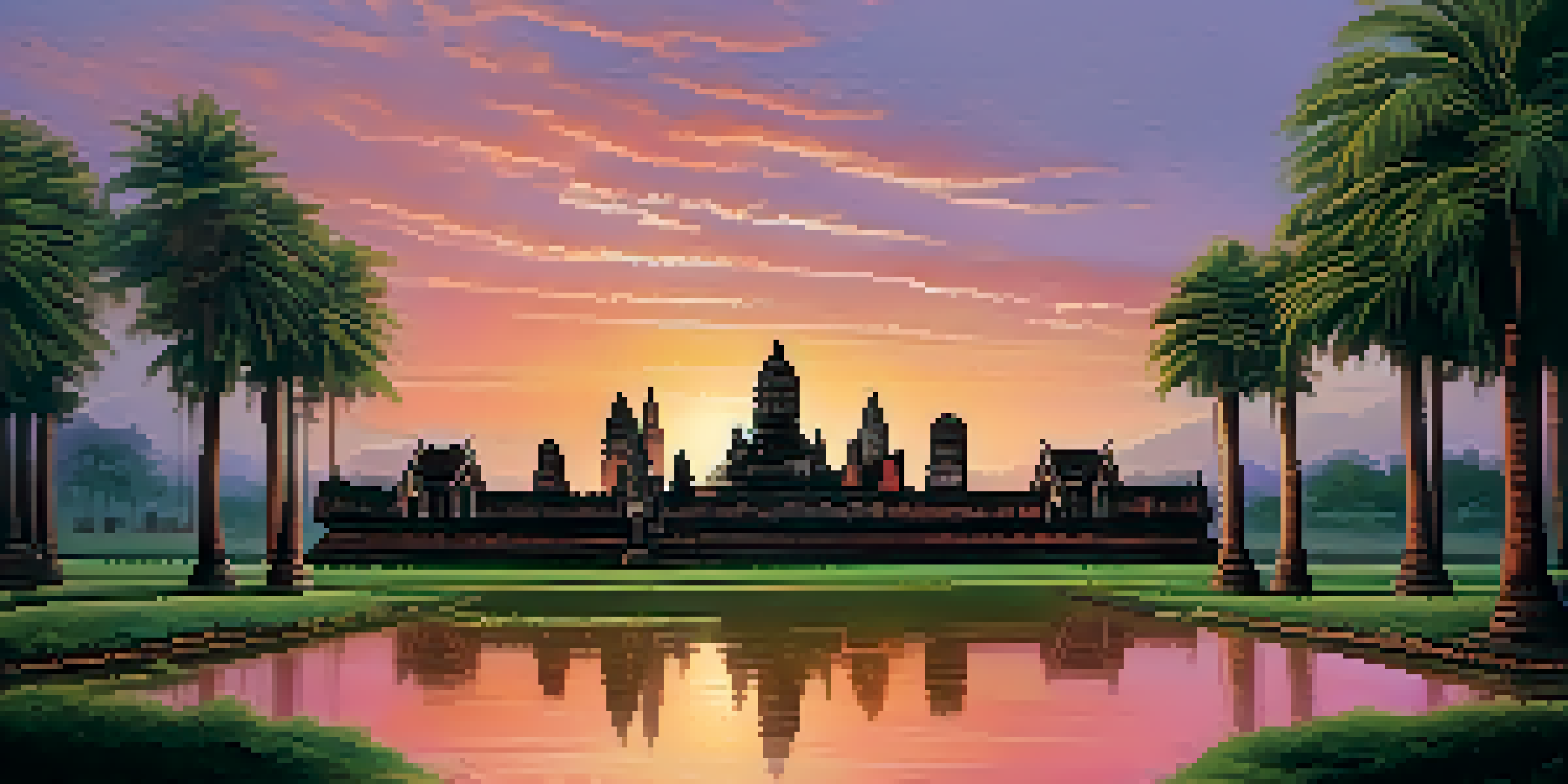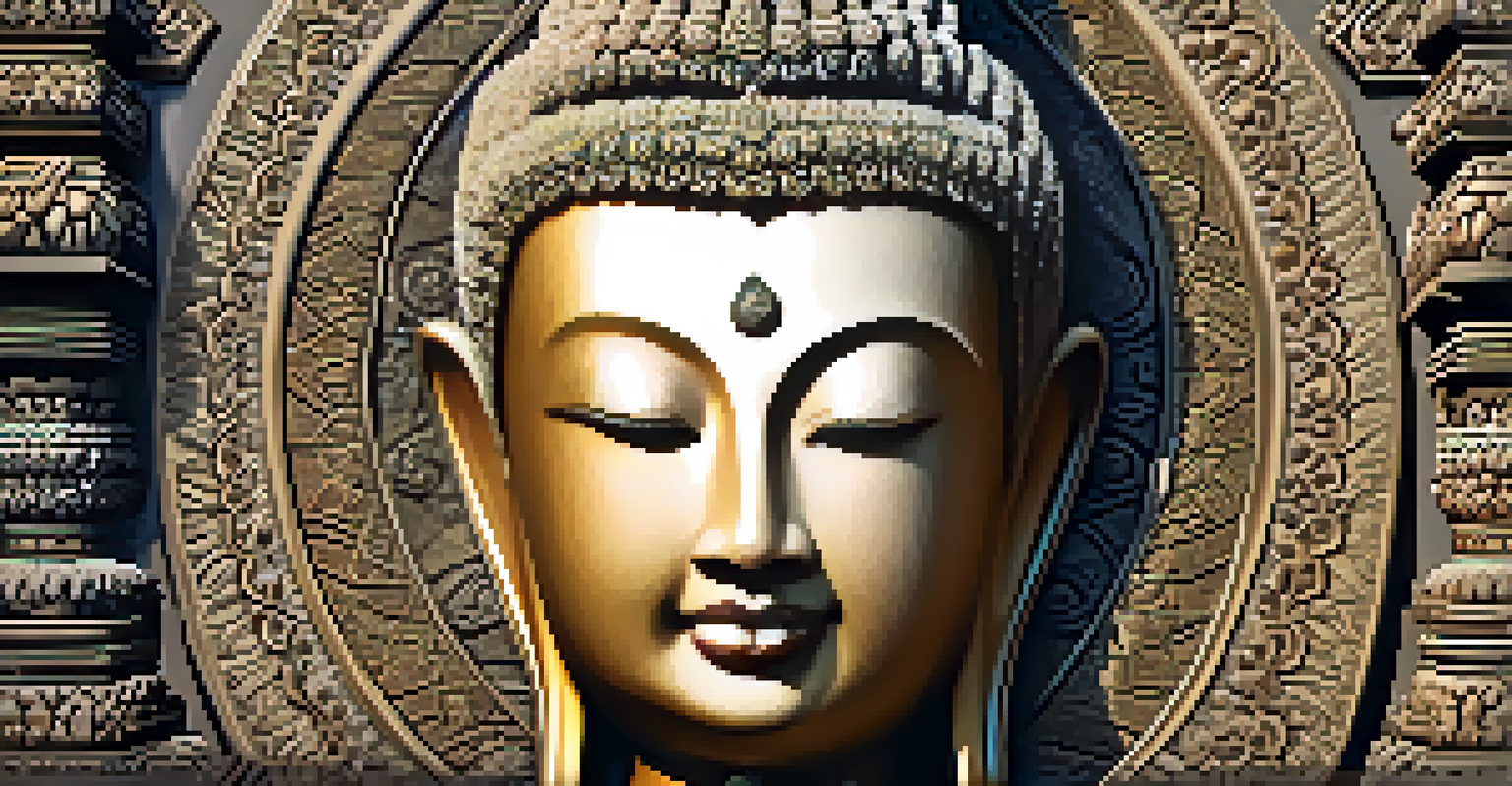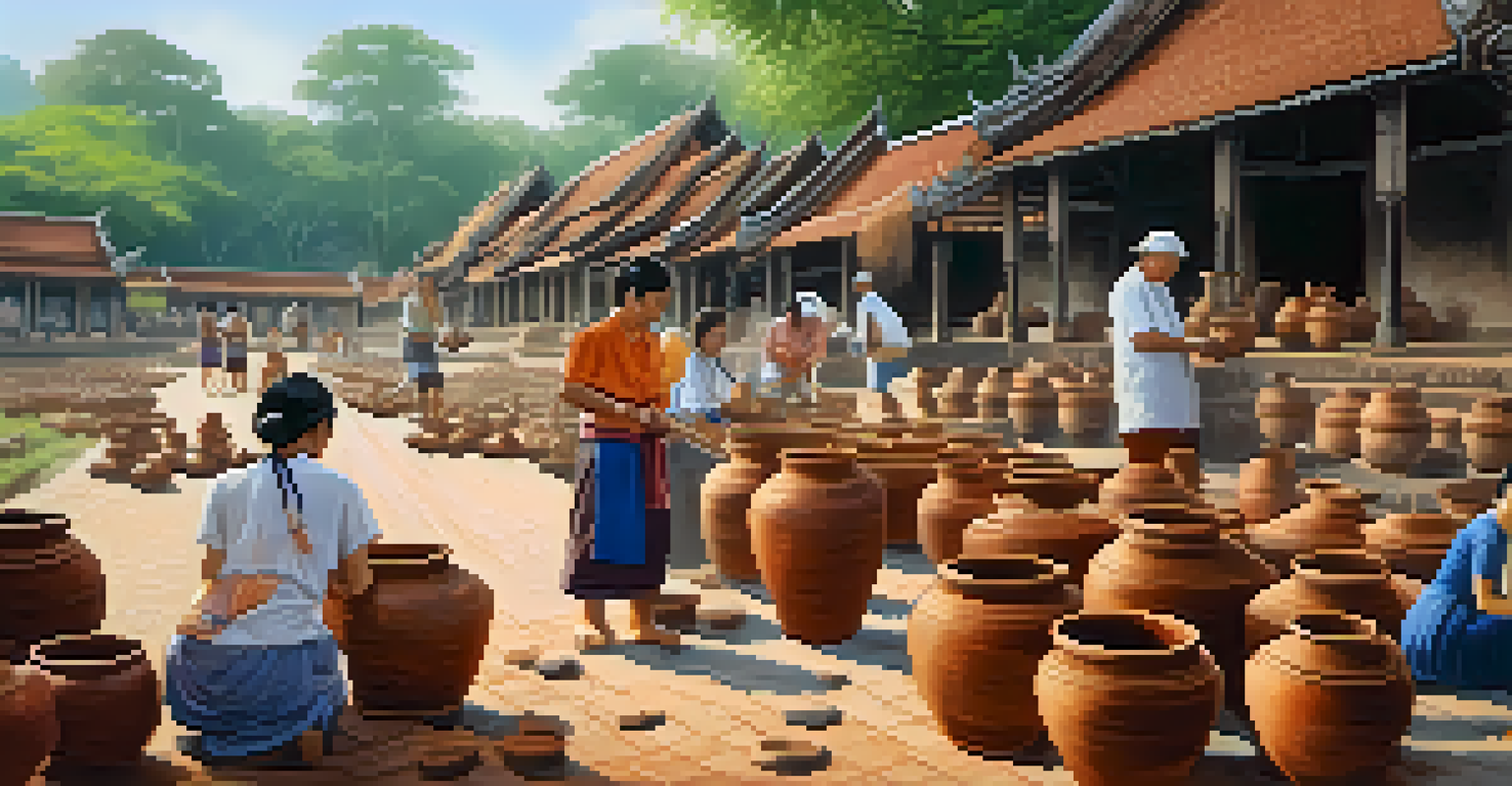Exploring the Kingdom of Sukhothai: The Birth of Thai Culture

The Historical Significance of Sukhothai
Sukhothai, often referred to as the cradle of Thai civilization, holds a pivotal place in Thailand's history. Established in the 13th century, it was the first capital of the Kingdom of Siam. The city's innovative governance and cultural achievements laid the groundwork for what would become modern Thailand.
History is not a burden on the memory but an illumination of the soul.
The kingdom thrived under King Ramkhamhaeng, who is credited with creating the Thai script, a monumental achievement that enriched Thai literature. This period marked a shift towards centralized governance and the development of unique Thai identity, distinguishing it from neighboring cultures.
Today, Sukhothai's historical park, a UNESCO World Heritage site, showcases the architectural brilliance of this era with its stunning temples and monuments. Visitors can walk through the ruins and feel the echoes of a time when art and culture flourished in the heart of the kingdom.
The Art and Architecture of Sukhothai
The art and architecture of Sukhothai are a testament to the creativity and skill of its people. Characterized by graceful Buddha statues and intricate temple designs, the style reflects a blend of influences from India and local traditions. This unique fusion created a distinctly Thai aesthetic that continues to inspire artists today.

One of the most famous sites, Wat Mahathat, features a colossal Buddha image that embodies the serenity and poise of Sukhothai’s artistic spirit. The design of the temple, with its lotus-bud chedis, symbolizes the aspirations of the kingdom towards enlightenment.
Sukhothai: Cradle of Thai Culture
Sukhothai established foundational cultural and artistic practices that shaped modern Thai identity.
As you wander through the ruins, you'll notice how the architecture also tells stories of the past. Each temple and statue holds a piece of history, inviting visitors to reflect on the spiritual significance and the cultural narratives that shaped Thailand.
Cultural Innovations of Sukhothai
During the Sukhothai period, Thailand saw remarkable cultural innovations that defined its identity. The establishment of the Thai script was a significant milestone, enabling the preservation and dissemination of knowledge. This development fostered a sense of national unity and cultural pride among the Thai people.
Art is the most beautiful of all lies.
Artistic expressions flourished as well, with advancements in pottery, sculpture, and textiles. These crafts not only served practical purposes but also became a means of cultural storytelling, reflecting the values and beliefs of the society.
In essence, Sukhothai was more than just a political center; it was a cultural hub where art, literature, and spirituality thrived together. This blend of creativity and innovation laid the foundation for Thailand's rich cultural tapestry that we celebrate today.
The Role of Buddhism in Sukhothai
Buddhism played a vital role in shaping the culture and identity of Sukhothai. As the state religion, it influenced not only the spiritual lives of the people but also their artistic and architectural endeavors. Temples were constructed as places of worship and community gathering, reflecting the importance of faith in everyday life.
The serene images of the Buddha found across Sukhothai serve as reminders of the kingdom's commitment to peace and harmony. These statues, often depicted in meditation, became symbols of spiritual aspiration for the people.
Buddhism's Influence on Society
Buddhism significantly influenced Sukhothai's culture, demonstrating its integration in art, architecture, and governance.
The integration of Buddhist principles into governance also helped to establish a moral framework for the kingdom, guiding rulers in their duties and responsibilities. This profound connection between Buddhism and statecraft laid the groundwork for the enduring influence of Buddhism in Thai culture.
The Decline of Sukhothai and Its Legacy
Sukhothai's prominence eventually waned in the 15th century, giving way to the rise of the Ayutthaya Kingdom. Despite its decline, the legacy of Sukhothai continues to resonate throughout Thailand. The cultural and artistic practices established during this period are still evident in modern Thai culture, from language to art.
Many of the traditions and customs that originated in Sukhothai have been preserved and adapted over centuries. Festivals, dance, and culinary practices rooted in this historic kingdom remain integral to the Thai identity.
Additionally, Sukhothai serves as a source of inspiration for contemporary Thai artists and historians. The kingdom's rich history encourages ongoing exploration and appreciation, ensuring that the spirit of Sukhothai endures in the hearts of the Thai people.
Visiting Sukhothai: A Journey Through Time
Visiting Sukhothai is like stepping into a time machine that transports you back to the golden age of Thai culture. The historical park, with its serene landscape and well-preserved ruins, invites visitors to explore the remnants of this ancient kingdom. It's a place where history comes alive, offering a glimpse into the lives of those who once thrived in the region.
Walking or biking through the park allows for a personal connection to the past. As you meander among the ancient temples and statues, you'll find yourself reflecting on the stories and traditions that shaped the Thai identity. Each corner reveals something new, keeping the sense of discovery alive.
Preserving Historical Heritage
Efforts to preserve Sukhothai's cultural heritage are vital for educating future generations and maintaining national pride.
Moreover, the local community adds to the charm of Sukhothai. Engaging with the friendly residents and experiencing their hospitality enriches the visit, making it not just a historical exploration but a cultural immersion.
Preserving Sukhothai's Cultural Heritage
The preservation of Sukhothai's cultural heritage is crucial for future generations. Efforts are underway to maintain the historical sites and promote awareness about the significance of this ancient kingdom. Both local and international organizations are working together to ensure that the stories of Sukhothai continue to be told.
Educational programs and community initiatives play an essential role in fostering a sense of pride among the Thai people. By learning about their history, young generations are encouraged to value and protect their cultural heritage.

Additionally, tourism brings attention to Sukhothai’s importance, helping to fund preservation efforts. With each visitor who walks through the historical park, the legacy of Sukhothai is both honored and revitalized, ensuring that this cornerstone of Thai culture remains vibrant for years to come.